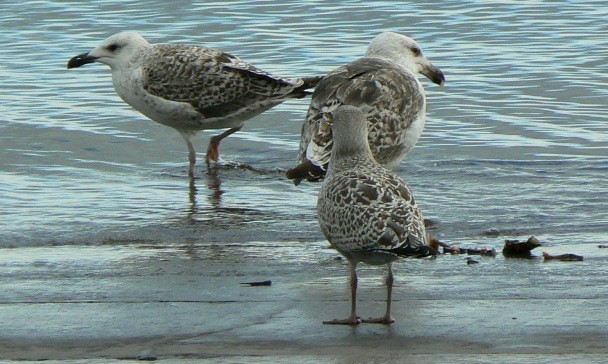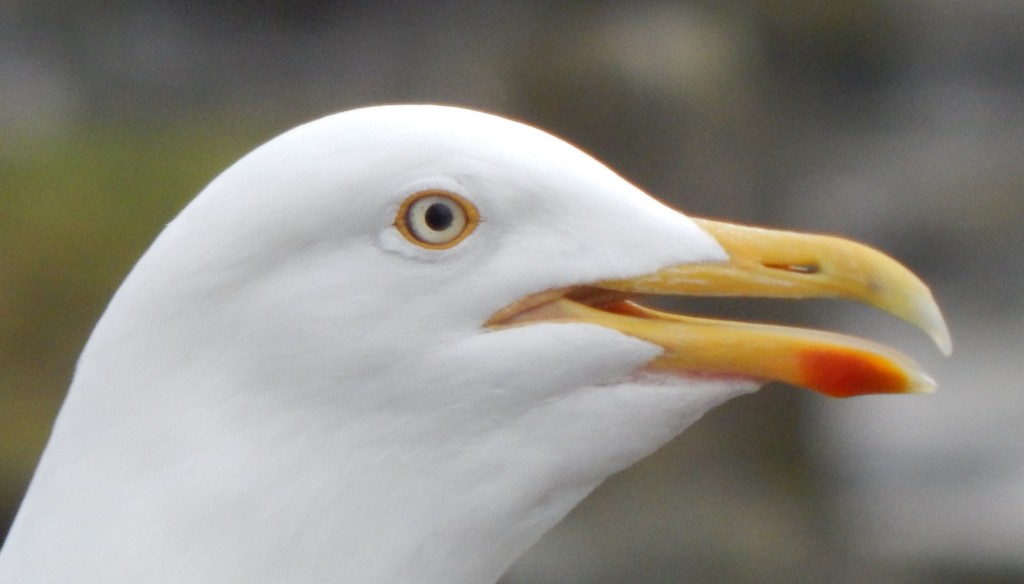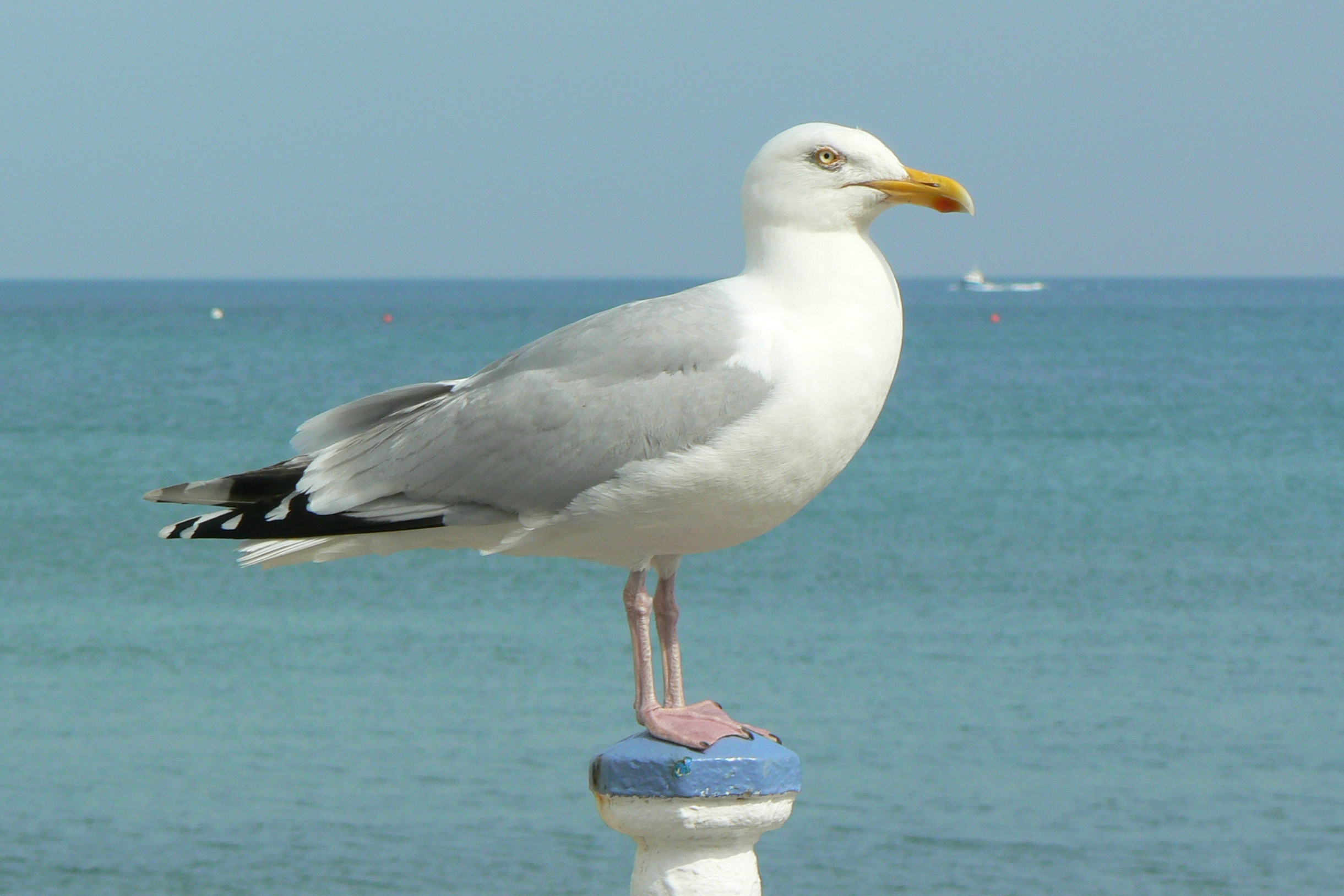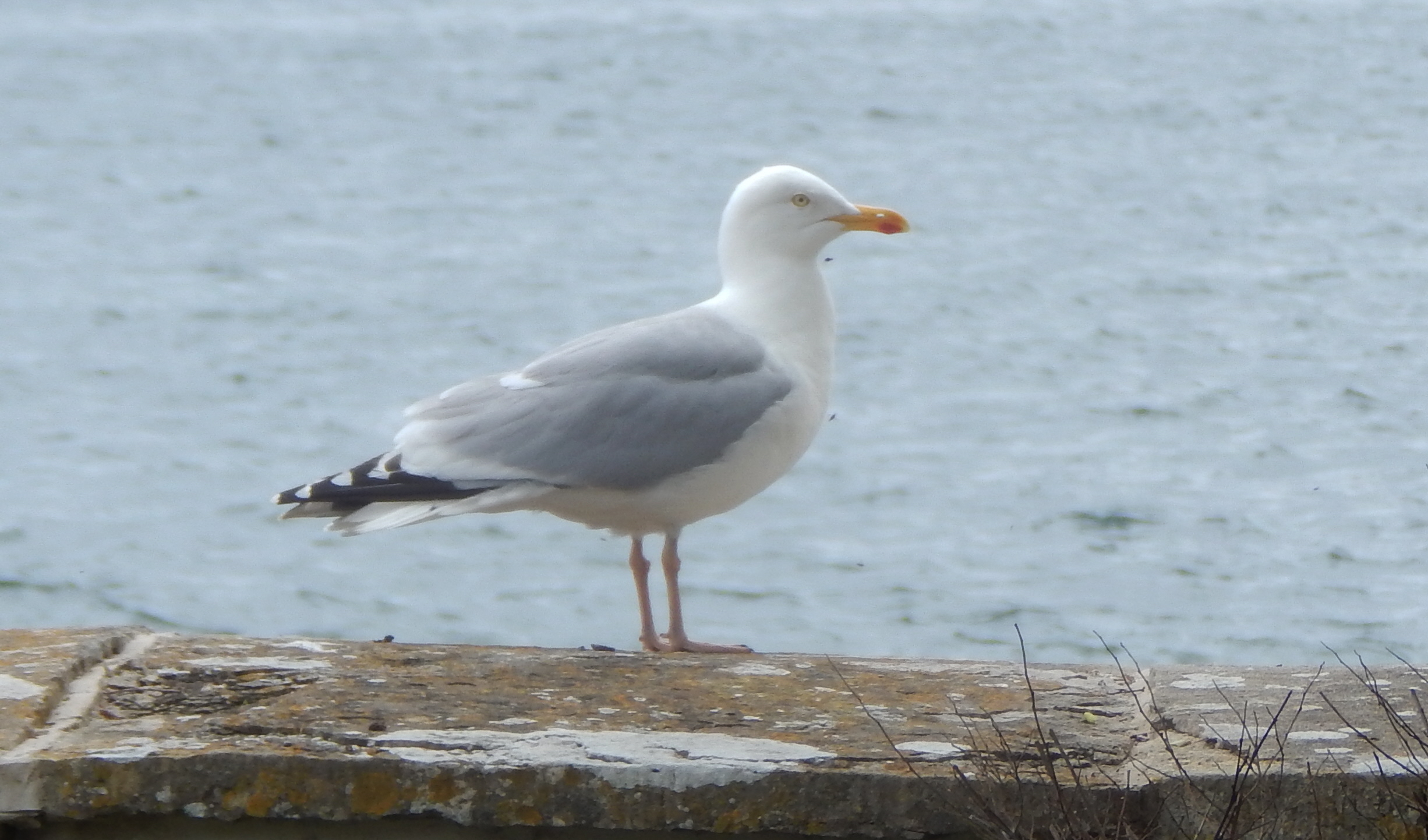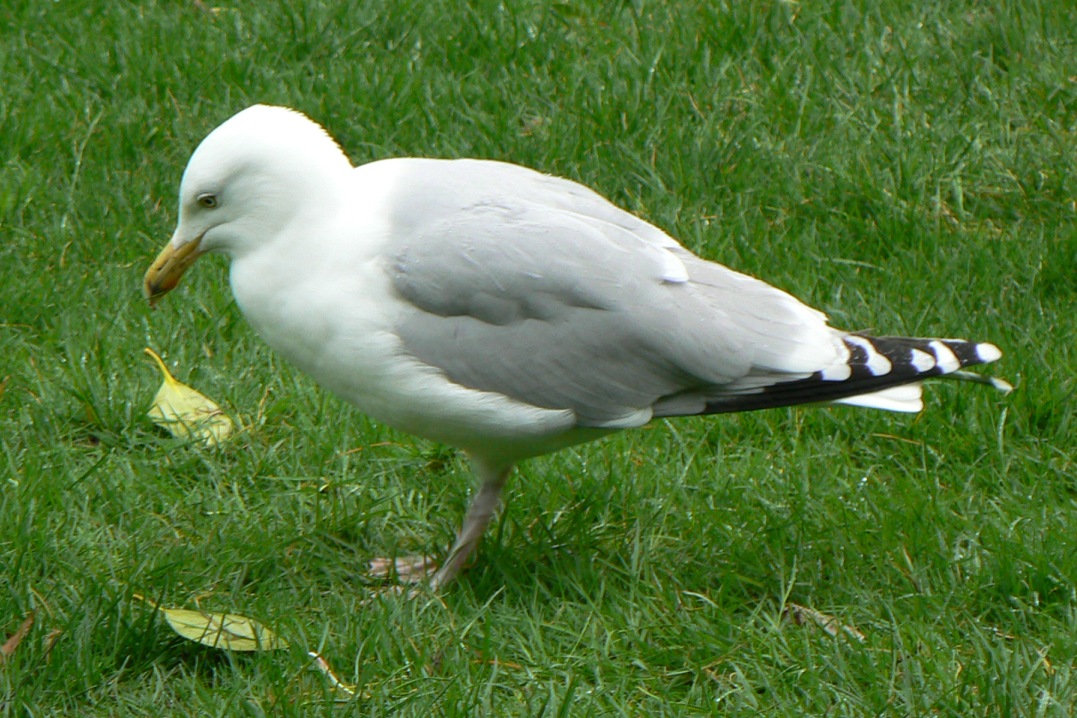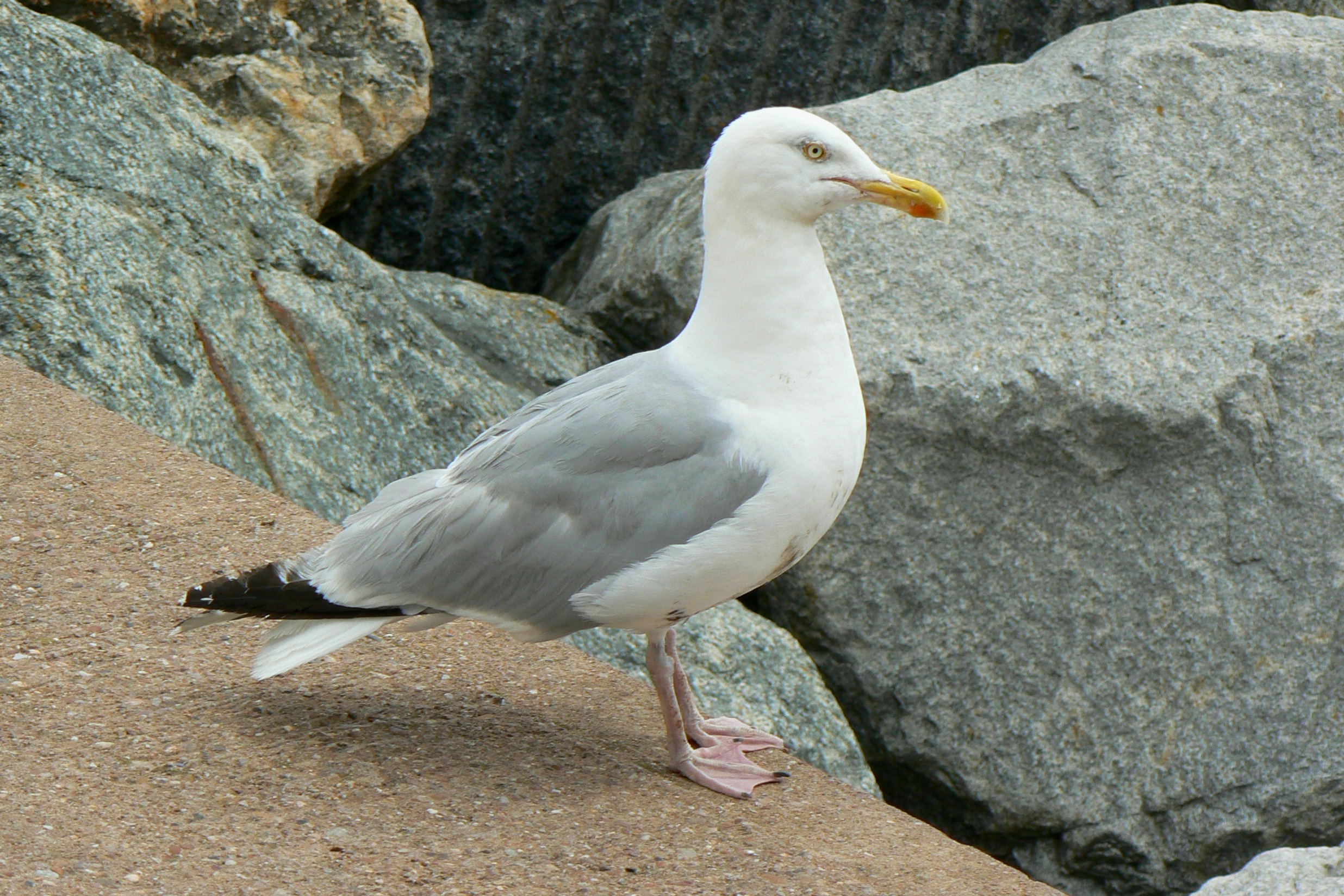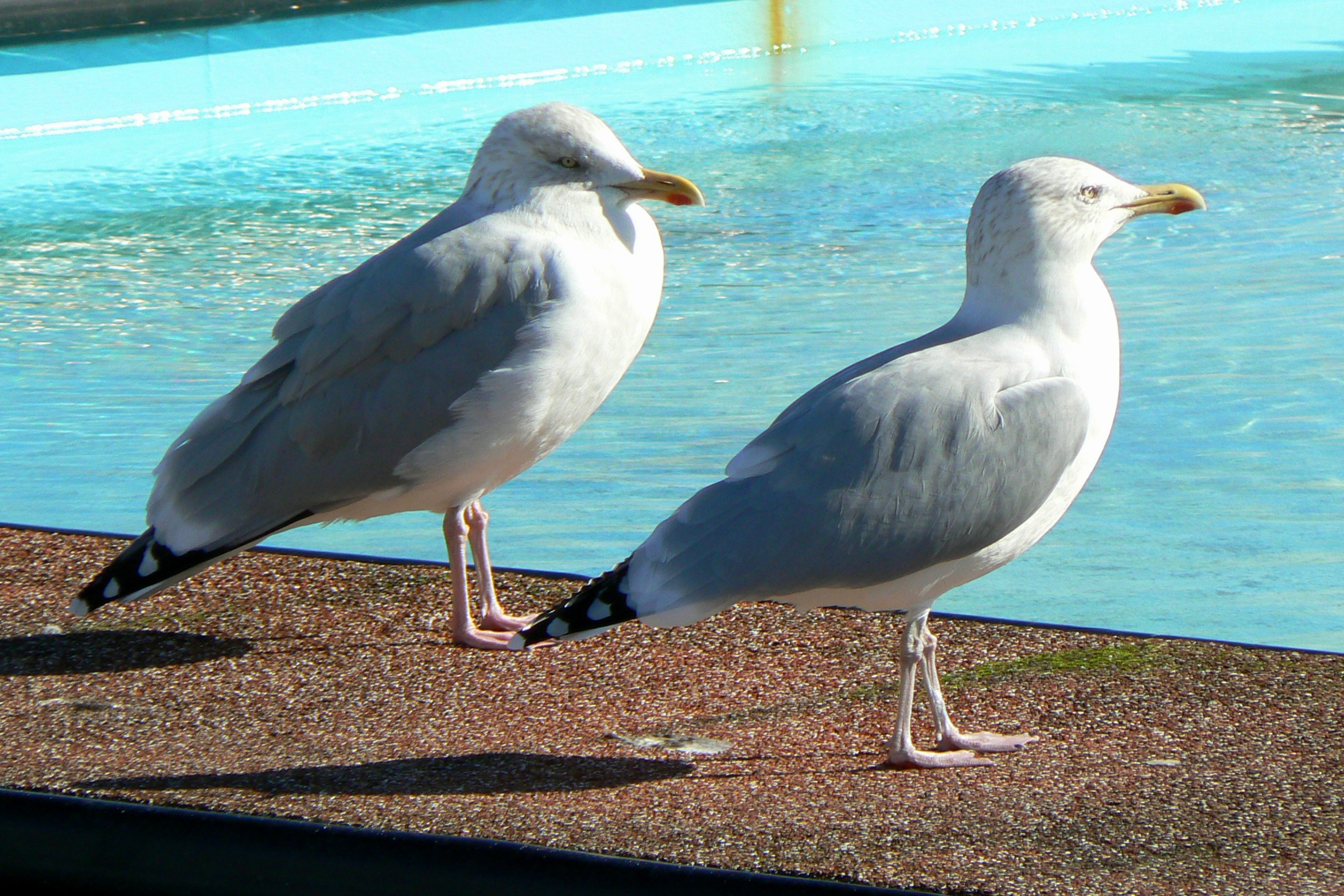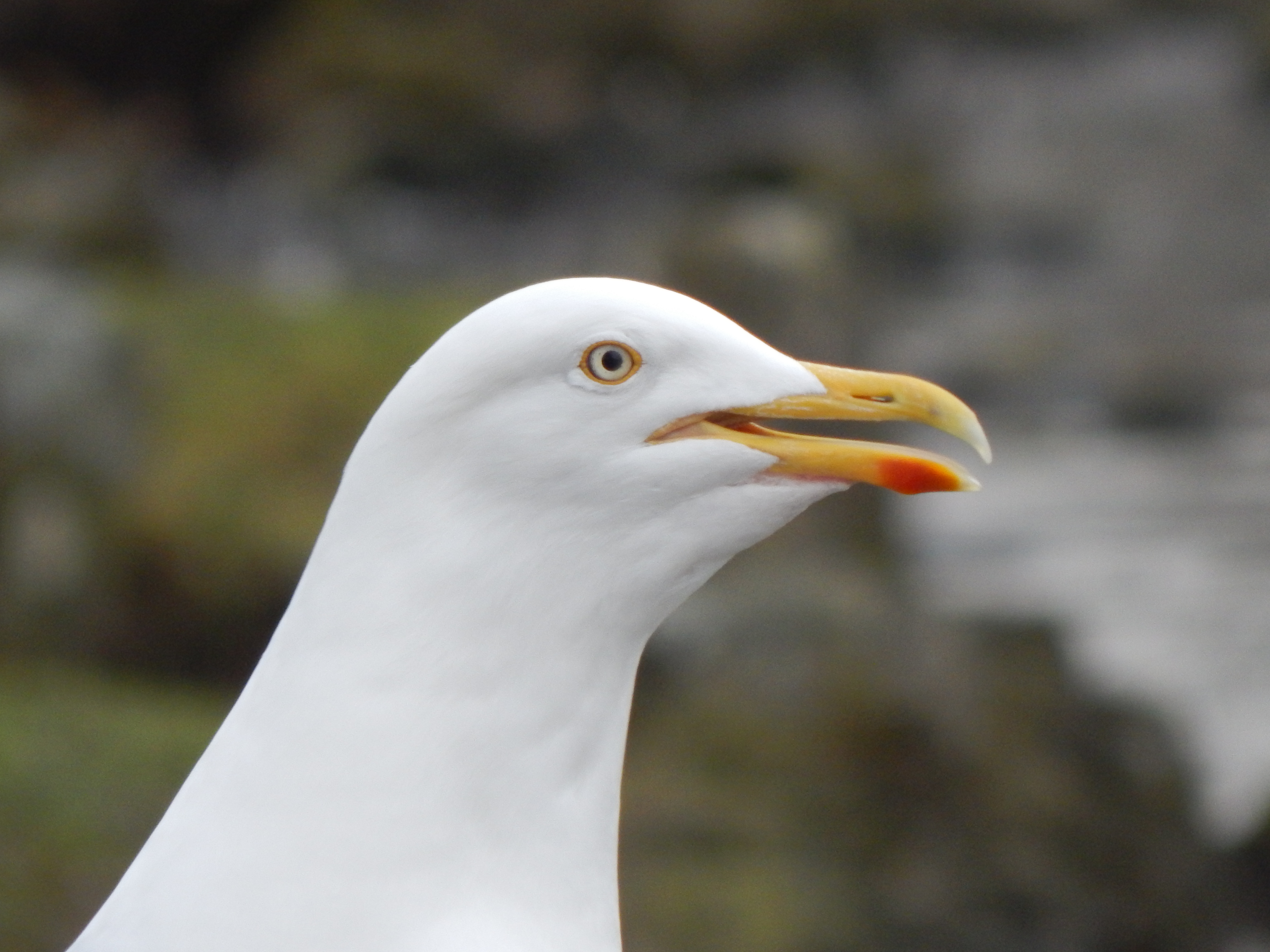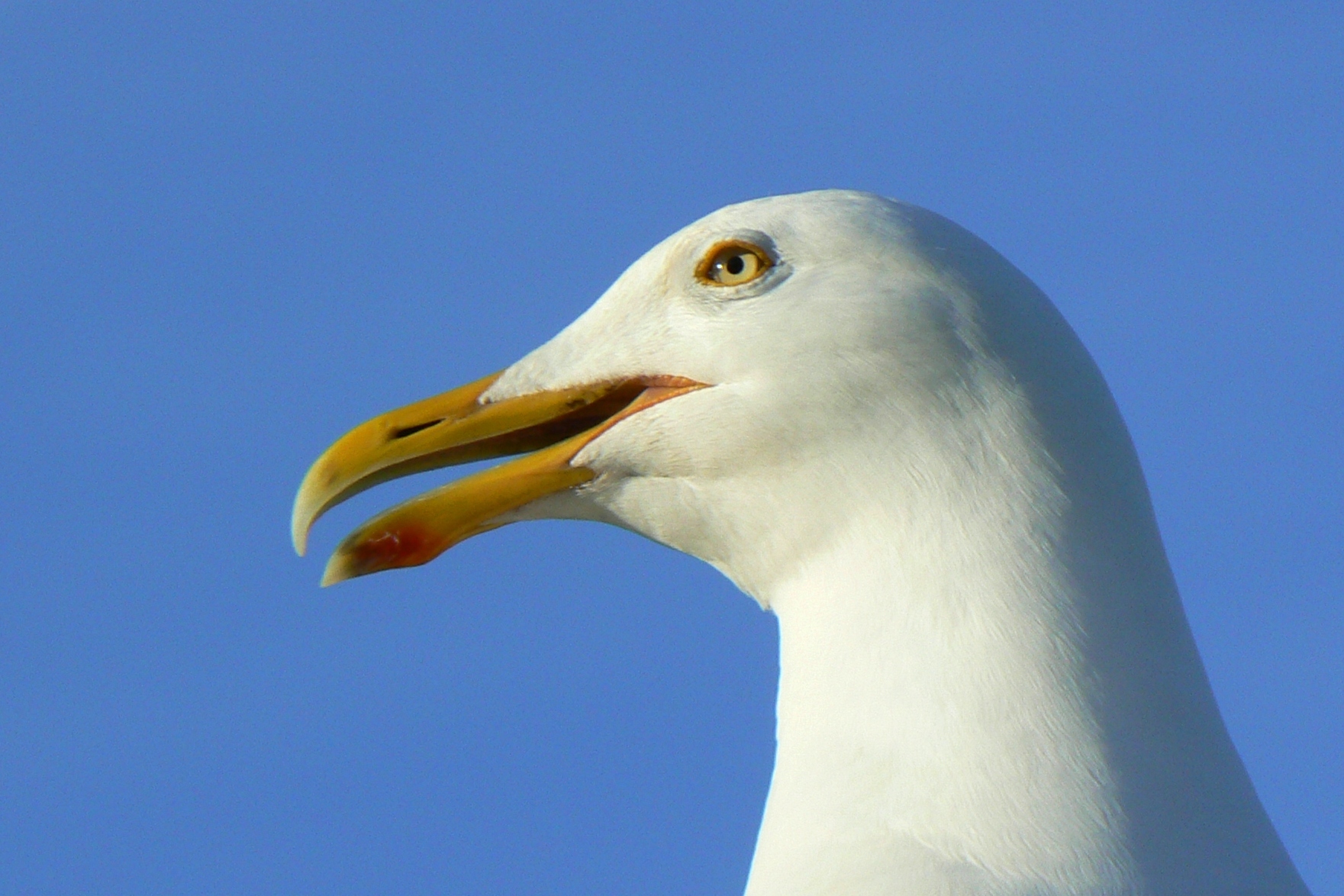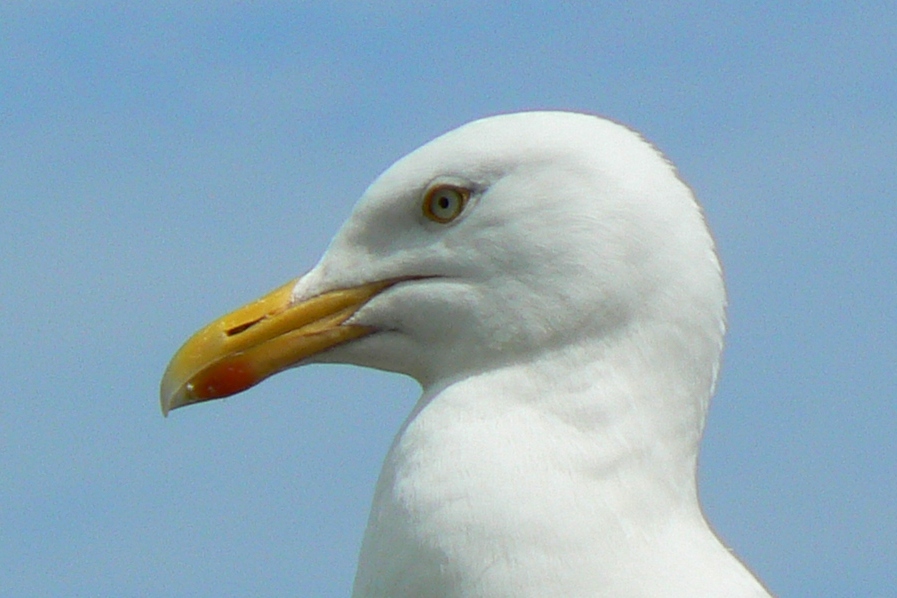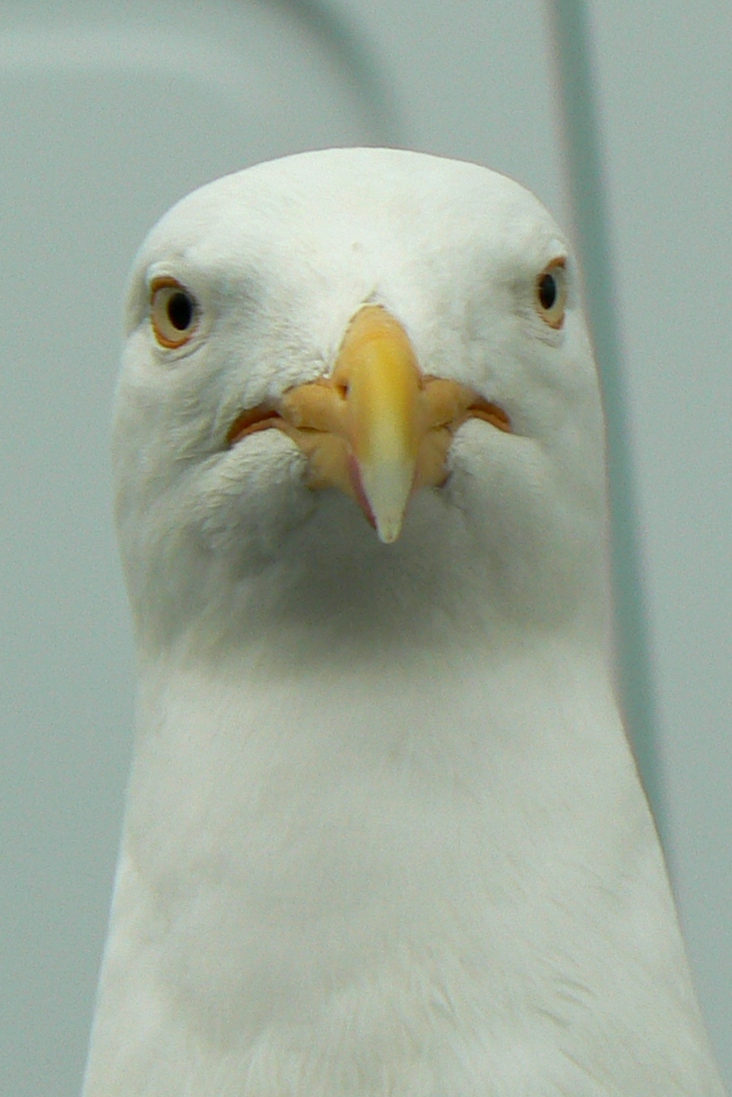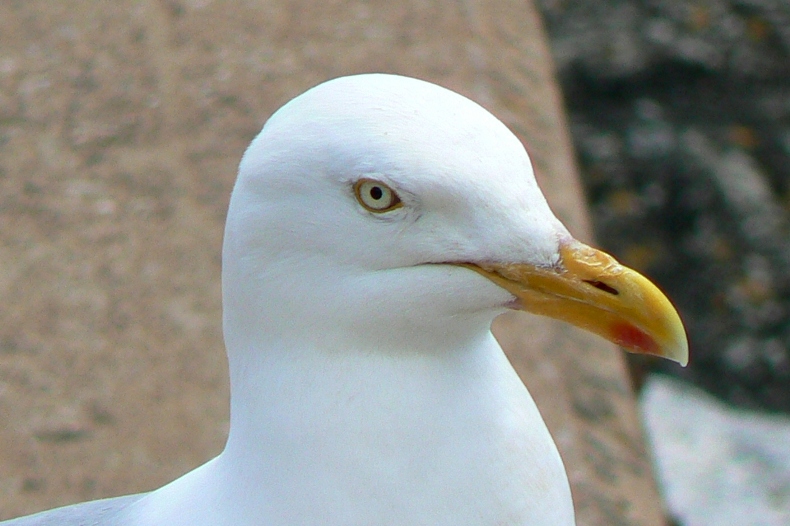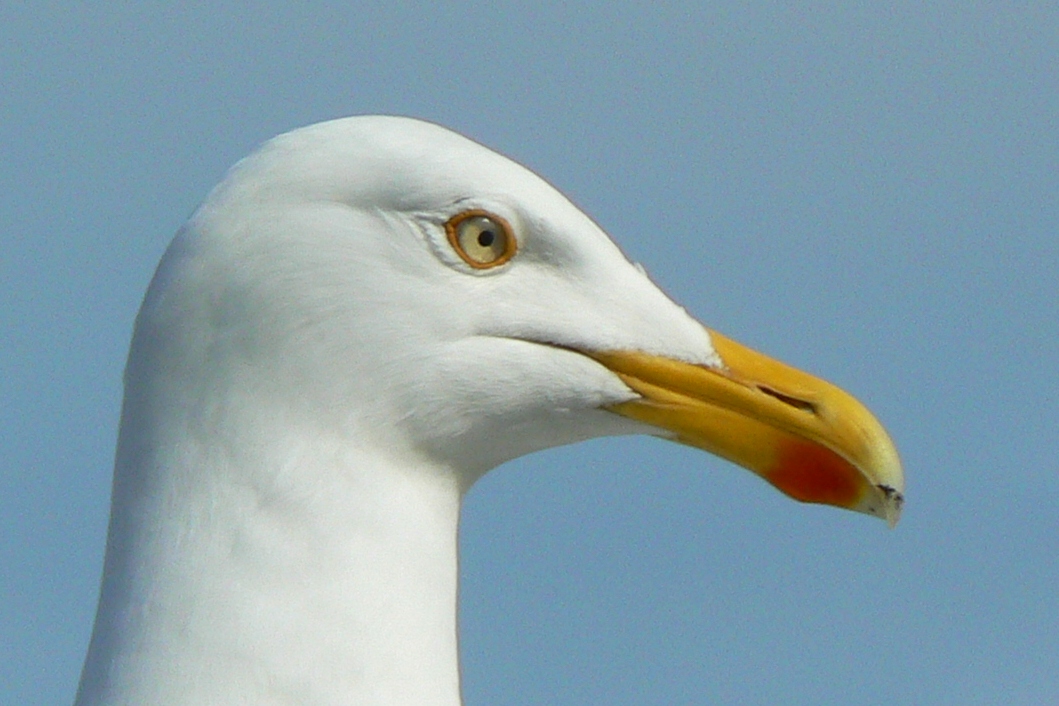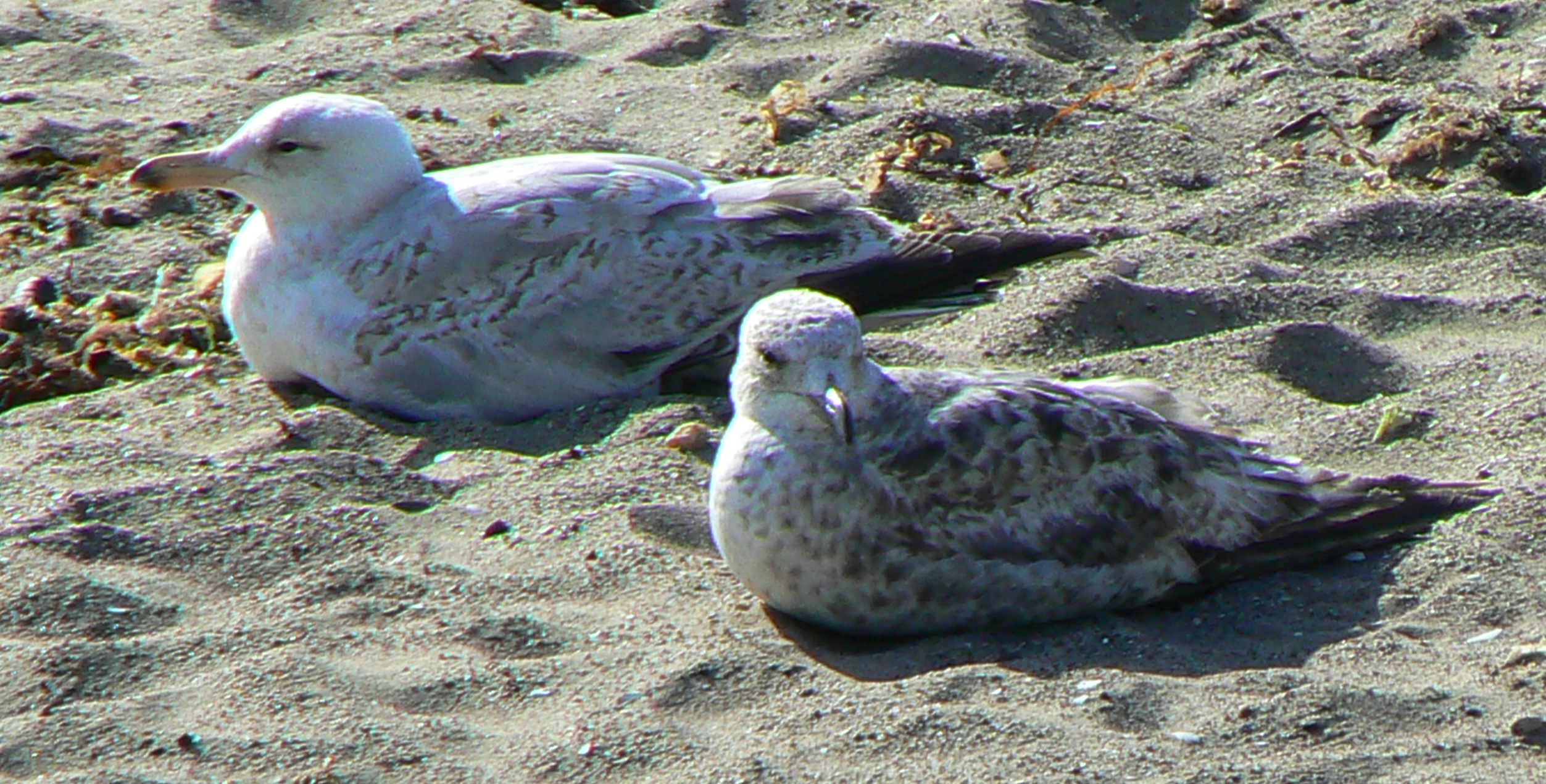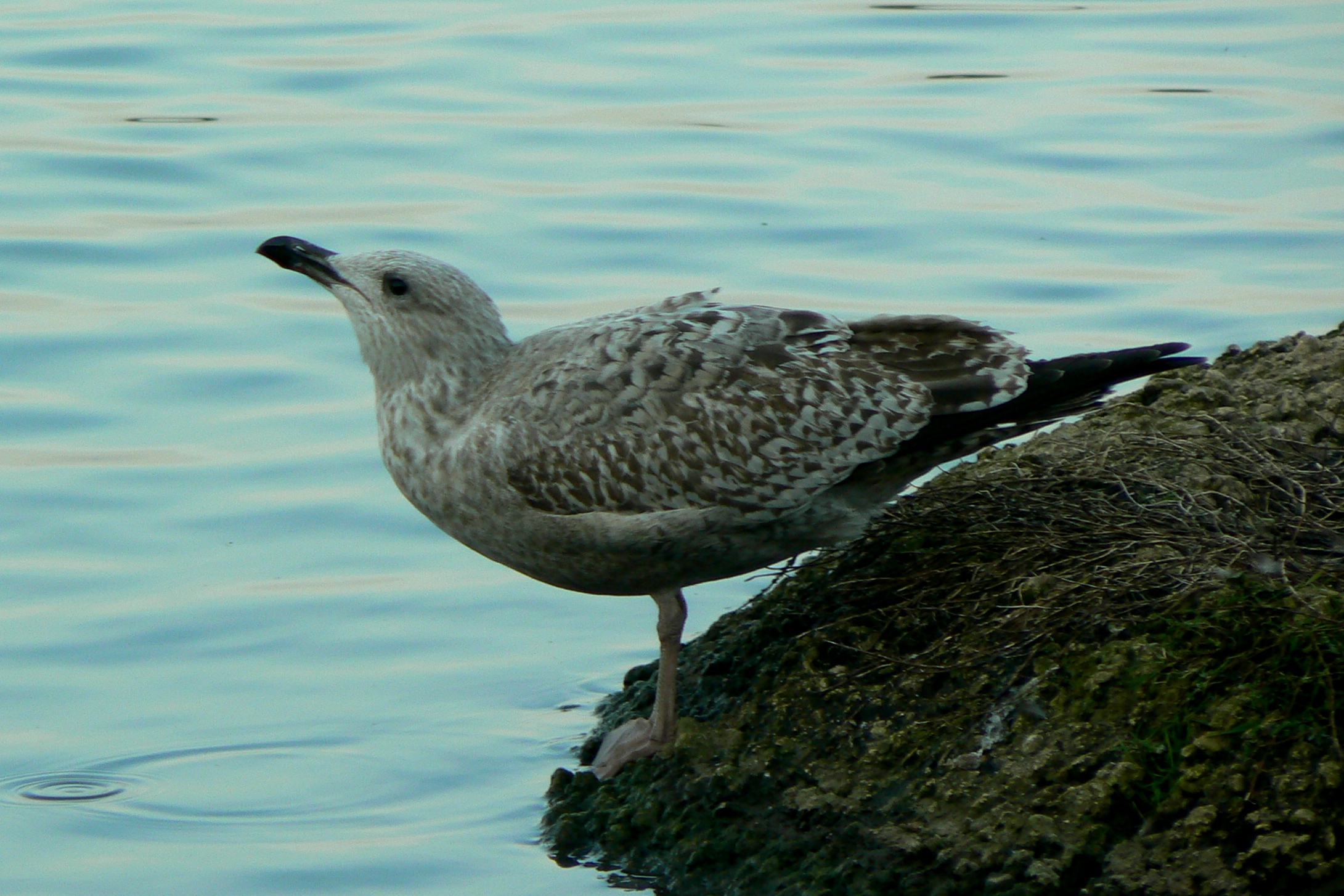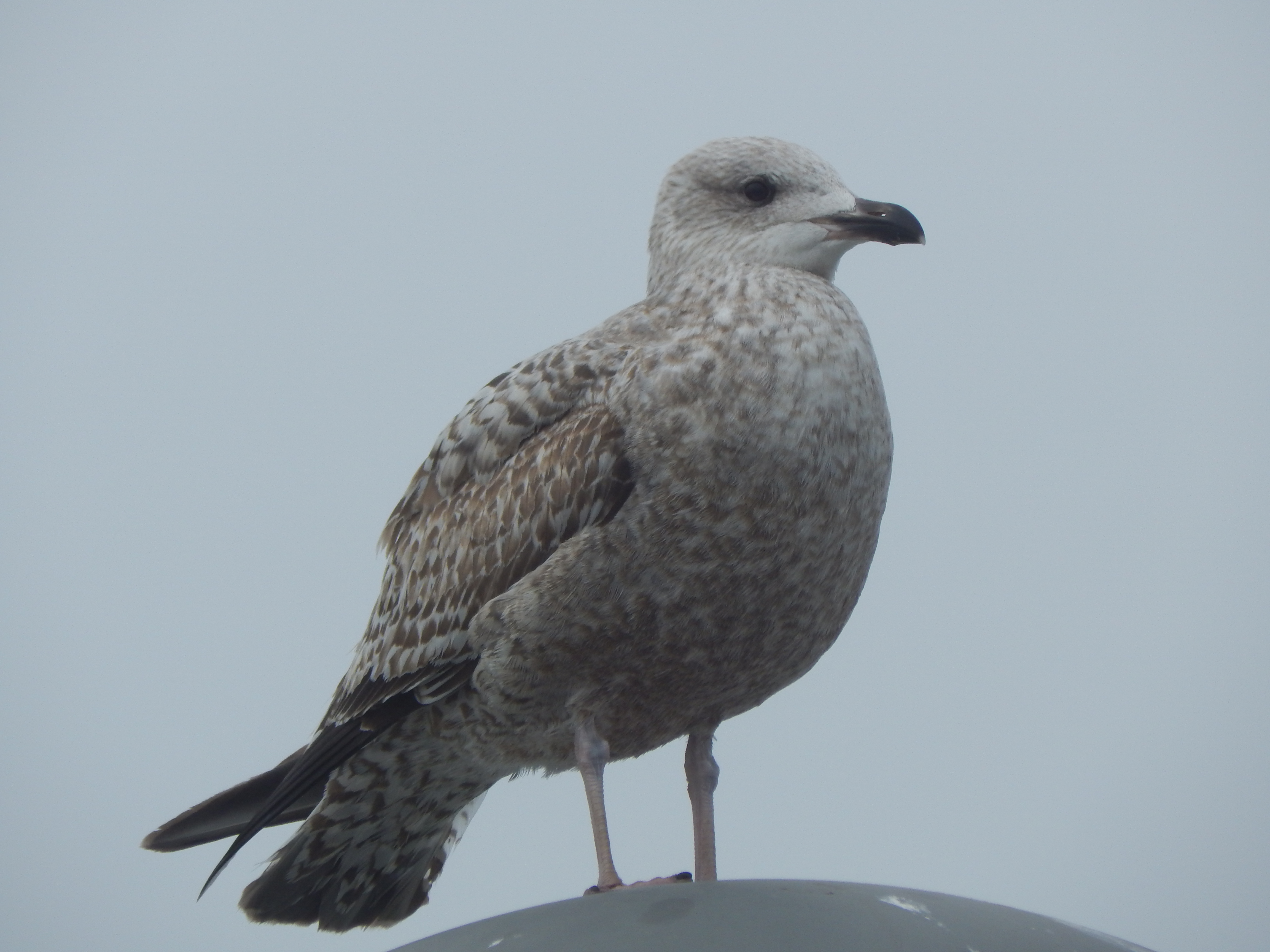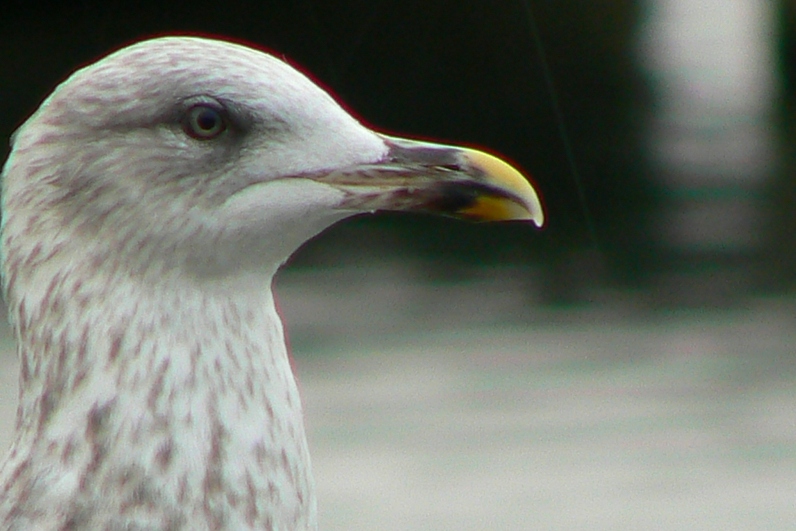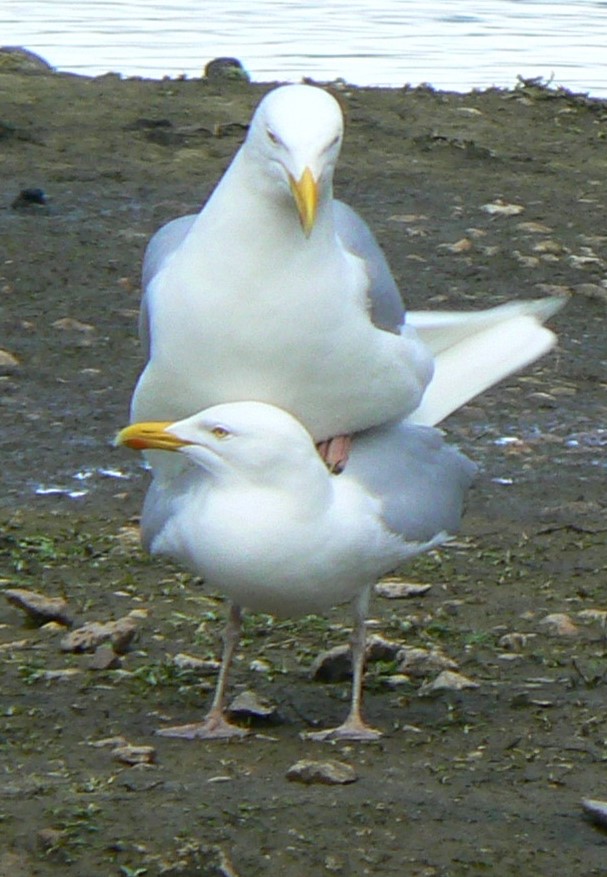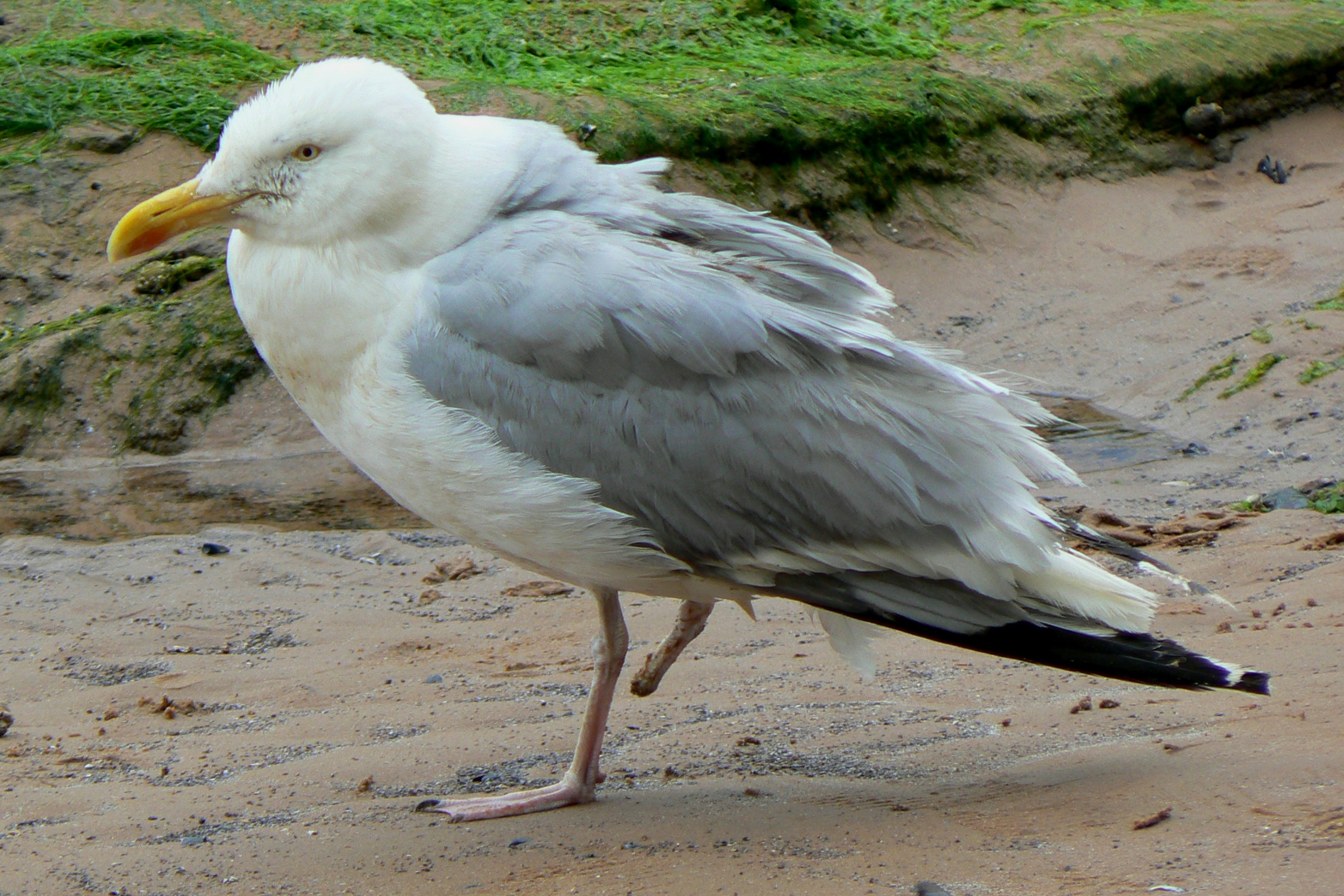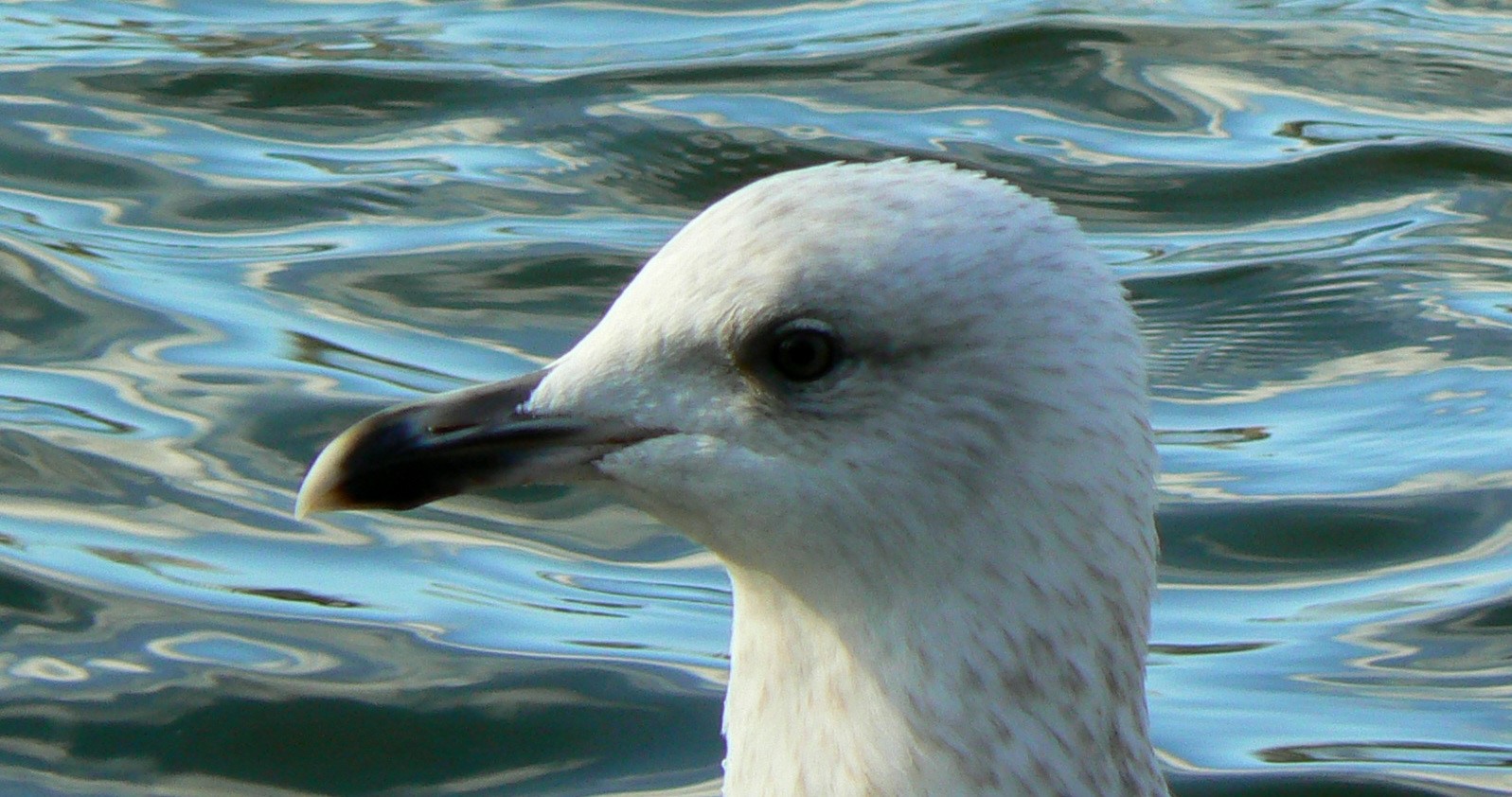
[196] Larus fuscus, Lesser Black-backed Gull
Introduction
Larus Fuscus, the Lesser Black-backed Gull, is one of two very common and widespread species of gull that in Britain are now more often seen inland than at sea. The other one was seen yesterday.
Taxonomy
Kingdom – Animals
Phylum – Chordates
Class – Aves (Birds)
Order – Charadriformes (Waders and Gulls etc.)
Suborder – Lari (Gulls etc., Skuas, Auks)
Family – Laridae (Gulls, Terns and others)
Subfamily – Larinae
Genus – Larus
Scientific Name – Larus fuscus
Name
This bird can be compared to the Great Black-backed Gull although its back is not really black. The Latin fuscus means dark or black-brown.
Description
Larus fuscus is very similar to Larus argentatus, almost identical in size, but its back is a darker shade of grey. In some conditions at a distance, it could be called black. Its legs and feet are yellow.
Otherwise, much of what I said yesterday about [195] the Herring Gull also applies to Larus fuscus. The two species are very closely related and the two species of both are sometimes considered as a group of similar species.
The next picture shows both species for comparison.
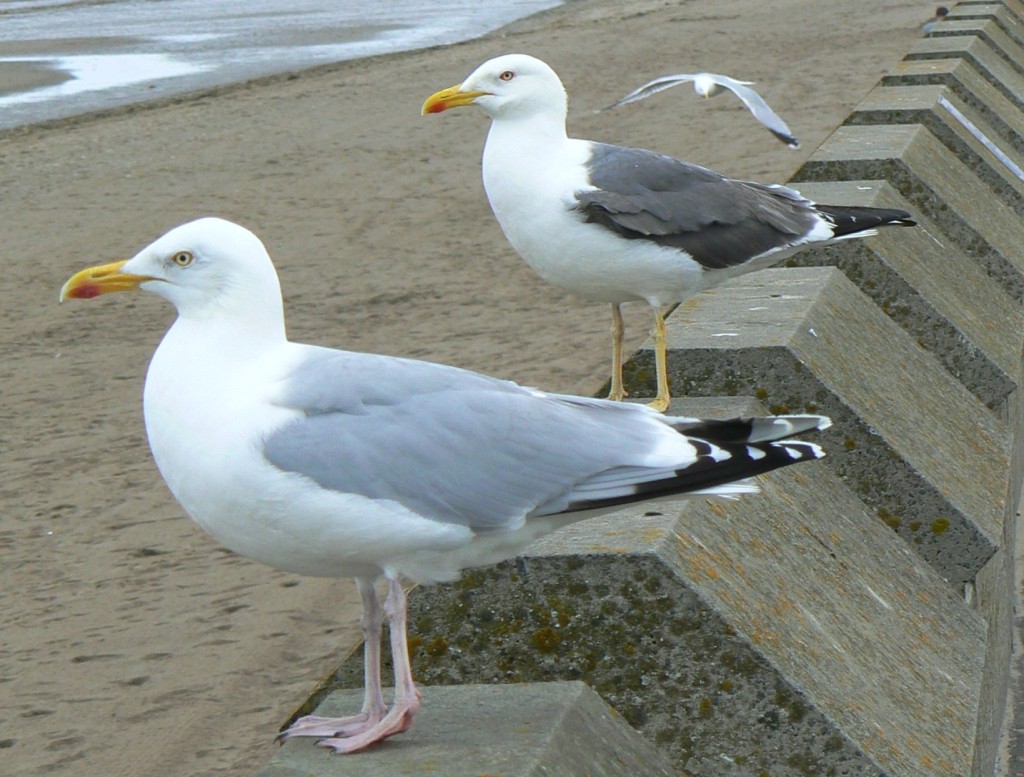
(The Larus fuscus may be slightly smaller but the apparent difference in size in the picture is mostly due to the perspective of distance.)

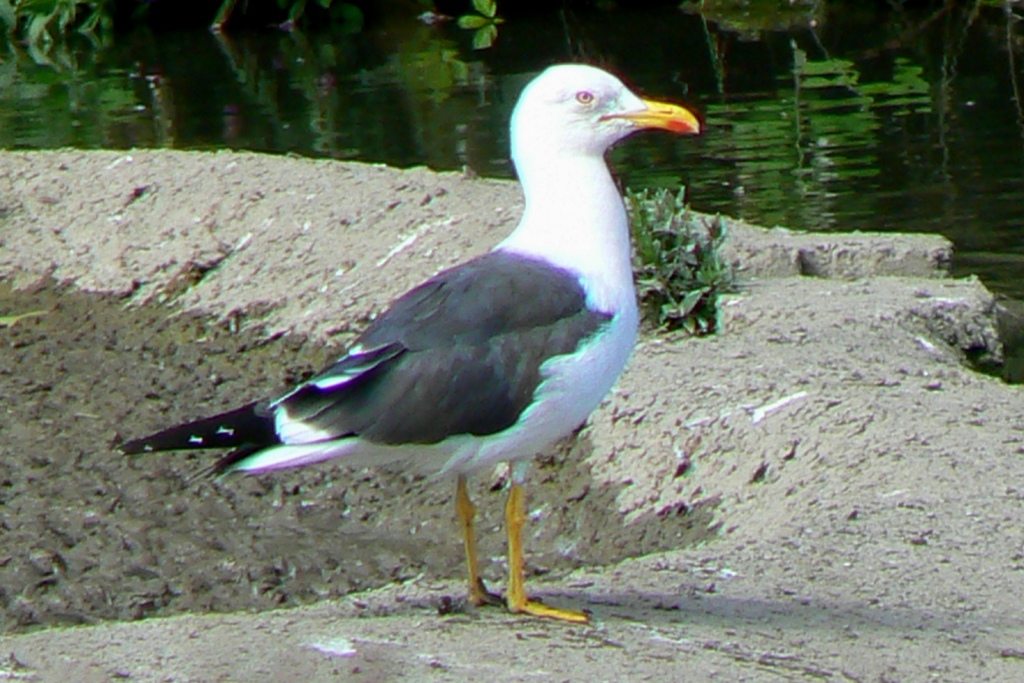
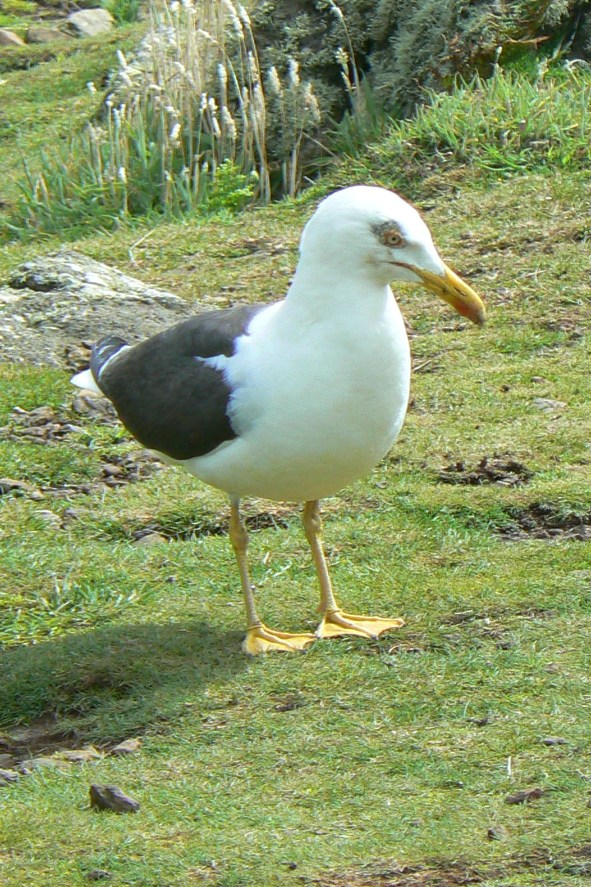

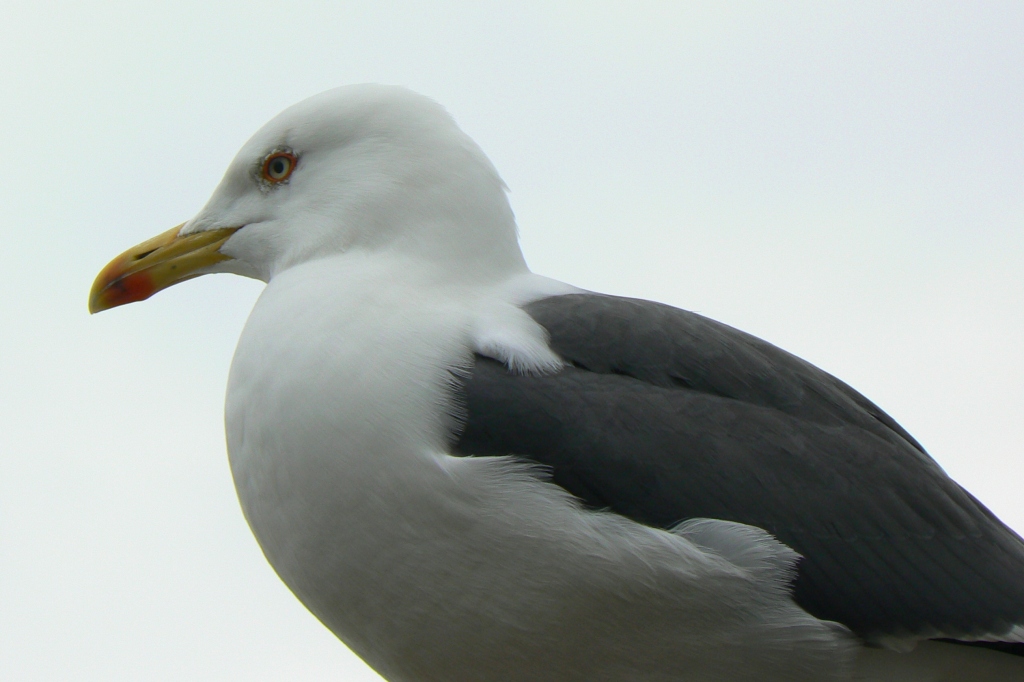


In winter they have the same spotted head and necks as Herring Gulls and the young birds are virtually identical. Both species are mottled brown with pinkish legs and black bills. I work on the assumption that juvenile gulls are most likely to be the same species as nearby adults so I won’t guarantee that I have the right species here (or yesterday.)

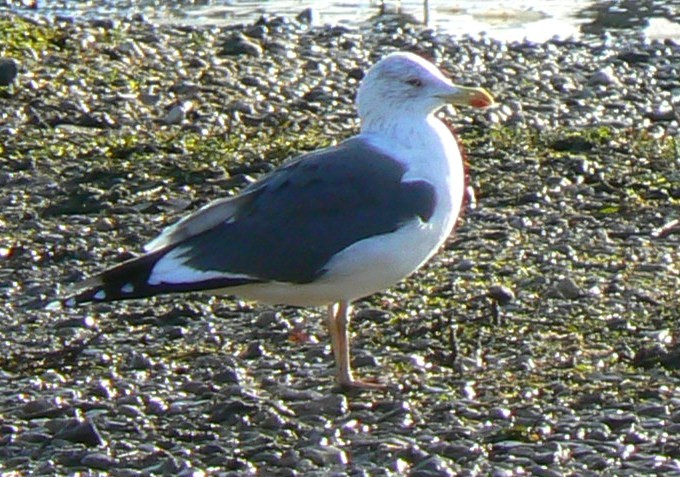
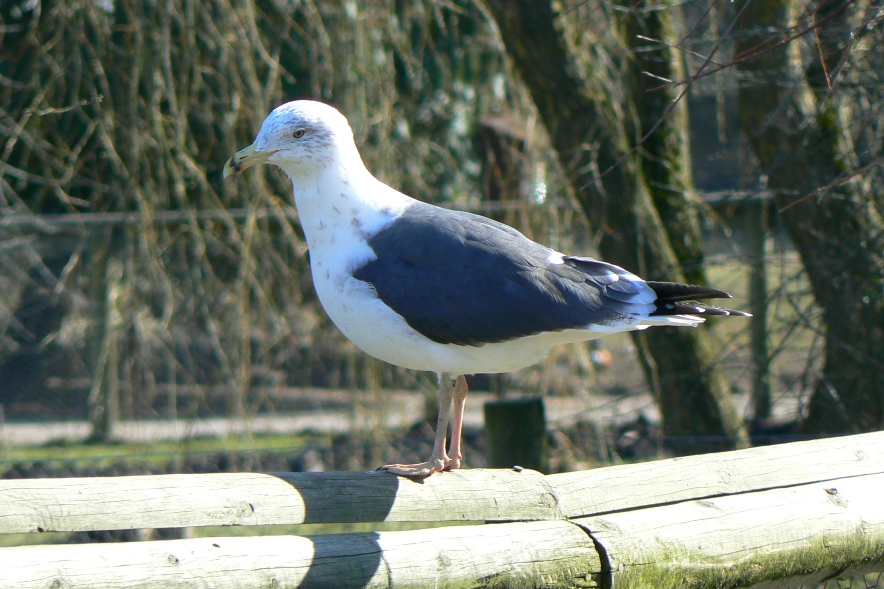
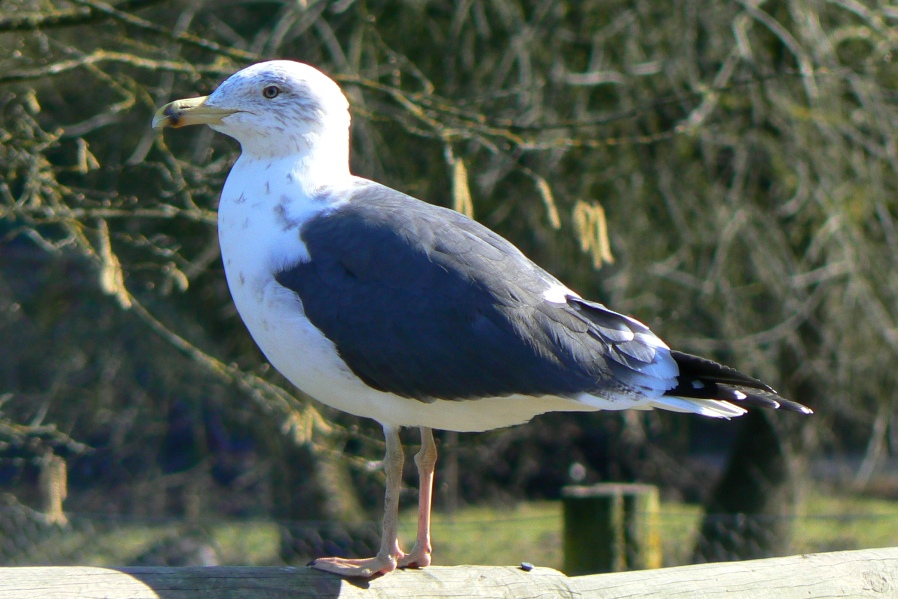
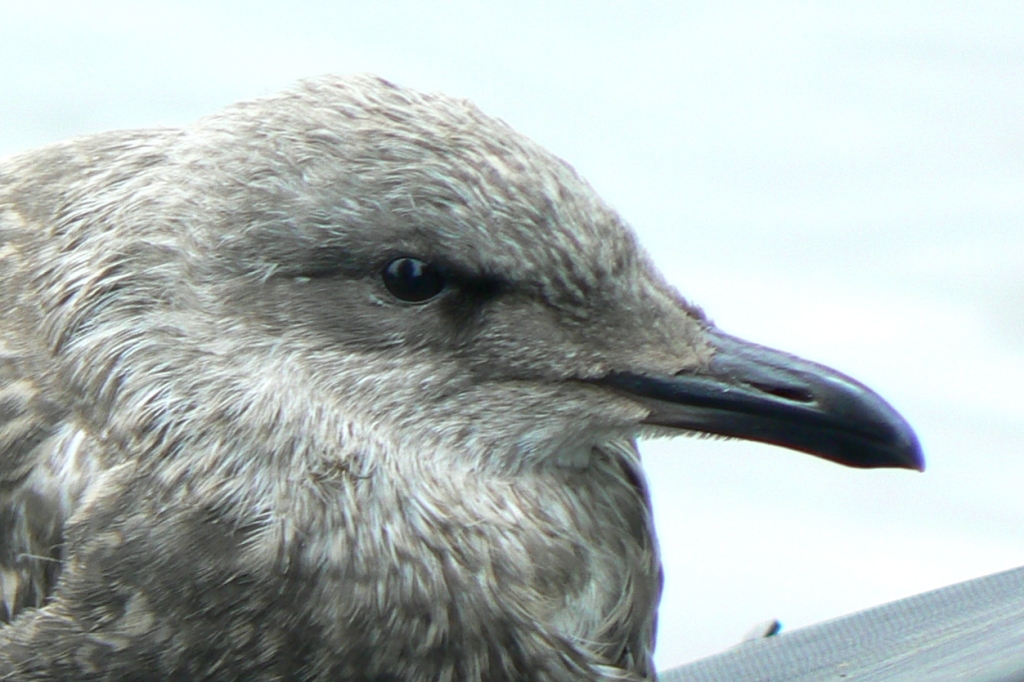

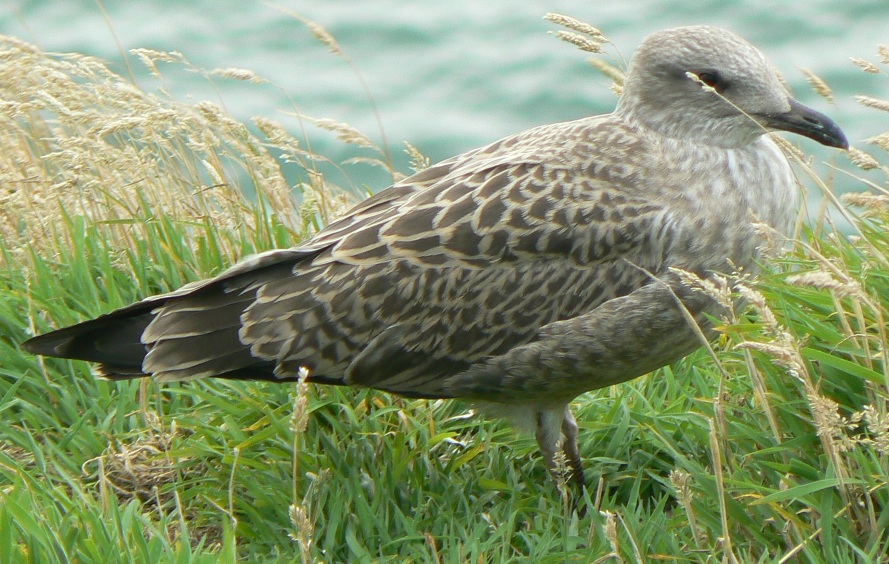
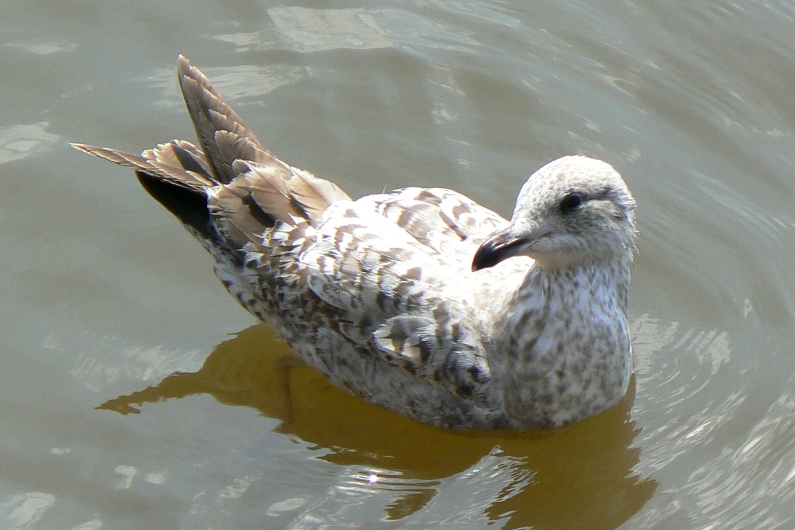
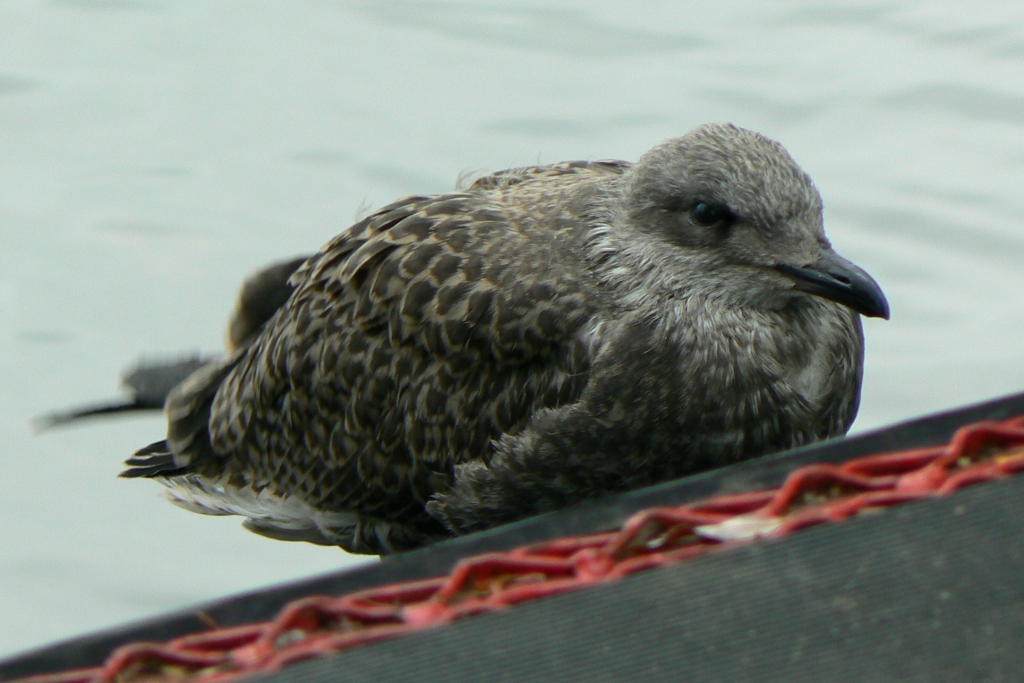


Habitat
The traditional winter location of Larus fuscus is much wider than Larus argentatus, including Atlantic coasts down to Central Africa, Indian ocean coasts, the coasts of China and parts of North America. It breeds further North around Iceland and the Arctic coasts of Europe.
In the UK it is found at some seaside locations but is now mainly resident inland, often in towns and cities as an unwelcome visitor.

Other Notes
As noted yesterday, at seaside resorts, Herring Gulls and Lesser Black-backed Gulls tend not to mix. But both species can occur in the same towns and cities inland.
See also
There are a few more very rare occasional visitors in the Gull family but the only other one that is relatively common is Larus marinus, the Great Black-backed Gull. It is a much more of a sea bird and may be spotted with binoculars flying over the sea, or occasionally at rest very near to the sea.
[Note: with two species, one of which has the word ‘Lesser’ in its name, it is tempting to assign the word ‘Greater’ to the other, but ‘Great’ is more usually correct.]
It is noticeably larger than Larus fuscus and a darker shade of grey – almost bleck – but the best distinguishing feature is its pink legs.
It is the largest species of gull and takes four years to reach adult plumage.



